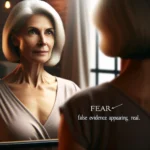Story-sharing in a safe and supportive place fosters self-growth
- join the self-paced life stories course

Story-sharing in a safe and supportive place fosters self-growth
Writing my story and sharing it with anyone feels a bit risky and involves a certain amount of bravery. I imagine others feel the same about sharing a narrative hitherto private. Life Stories Diary seems like the perfect place to take this risk.
The private Self-Paced Life Stories Course within Life Stories Diary feels like a hybrid of journaling and a support group. To me, a journal is a place to pour out all my thoughts and feelings, no matter how ugly they might be. It’s a place to process recent events as well as to anticipate those in the future. Being a person who tends to overthink everything, my journal is a patient listener to my endless ruminations. The Self-Paced Life Stories Course provides a similar level of safety in expression, with the additional benefit of sharing with others, something a journal does not provide.
When writing is easier than speaking
I’ve kept a journal or diary for many years. I’m almost 68 years old and began my first diary at around the age of 11. While I don’t remember much of what I wrote, I vividly remember the tiny gold key hanging from the diary and the lock for that key. The lock made the diary seem very mysterious and private. I have always found that expressing myself through writing is easier than speaking. I tend to carefully think about what I’m going to say before speaking, which can leave me trailing behind in conversations. One advantage of the Self-Paced Life Stories Mentoring Course is that deep thoughts can be conveyed first through writing and then discussed later.
Over the years, my diaries became notebooks without locks and keys, hidden in the bottom of a drawer for security. I no longer have my childhood diary; I have no idea what happened to it. I have the journals from later years, concealed in a box sealed with packing tape, to keep all the private thoughts and memories safe. Because I let go of all constraints while journaling, keeping these journals safe is very important to me. There are things written that I wouldn’t want to share with my children, for example, during my divorce from their father. Some pain is best kept private from some people and that is okay.
Write about the good as well as the not-so-good times
The journals contain details of my life, both joyful and painful. I wrote about the stillbirth of my first child and the births of my two healthy daughters. My daily entries document, in excruciating detail, the long, slow demise of my marriage and divorce as well as the happiness found in new love and a healthy new relationship. Writing about the good as well as the bad is helpful because it provides a fuller picture.
Reading and reflecting on the positive entries in my journal provides hope in the darker times. Reading and reflecting on the darker times, provides an opportunity to revisit these times as an observer as well as a participant. This process, when shared with supportive others, can help the dark times to be repackaged in a way that allows us to release our pain and be free to move forward.
Journaling can document the effects of an illness…
Woven throughout my journals is the destructive voice of a decades-long eating disorder. Entries illustrate why that “voice” was the most painful part of my life.
My daily accounts, written with an eating-disordered mind, show how the illness influenced and affected many other areas of my life. The entries provide a powerful insight into how life events and relationships exacerbated the eating disorder’s progression.
Now in a space of recovery, I can appreciate how complicated eating disorders are and how important it is to seek help–the sooner the better. My journals contain countless daily entries of my weight – often, multiple daily weigh-ins. If I didn’t like the number, I’d scold myself for being weak and would make a list of what I could and couldn’t eat that day. My worth depended on what that cold scale said, always.
…and sharing the narrative can assist self-understanding, encourage self-compassion
Reading over these entries, I feel heartbroken to see not only how badly I treated myself, but how deeply the eating disorder was dominating and manipulating my thoughts. Now, my journal has none of that negative self-talk. Instead, it bubbles and flows with compassion for me and others.
Being able to write about these life events and share them with others in a safe space can be truly empowering. While writing for myself assists in self-healing, the effect is amplified when someone else is listening.
Validation of life experiences within a supportive community is a deeply powerful method in helping to heal our inner wounds, no matter how insignificant they seem.
Write, share, connect and receive support in the Self-Paced Life Stories Mentoring Course.
Sharing our narrative with others in a safe and supportive place promotes connection and a sense of belonging.
We help each other heal and prop each other up when obstacles, big or small, pop up along the way. It’s a wonderful feeling to reach out and know that there will be a hand to hold.
By feeling safe to share our writing with others, we are not only helping others but also are on the right path to finding our best, most authentic selves.
Are you interested in writing short stories about your life experiences, or writing a full memoir? The Self-Paced Memoir Mentoring package contains a series of seven writing tasks that will guide you in mapping, writing, and preserving your story.





